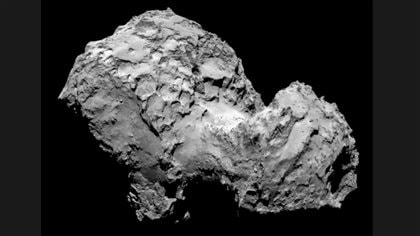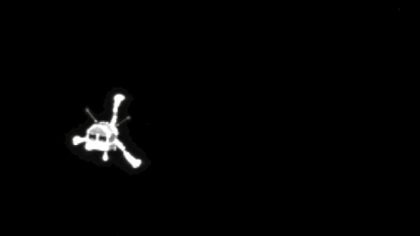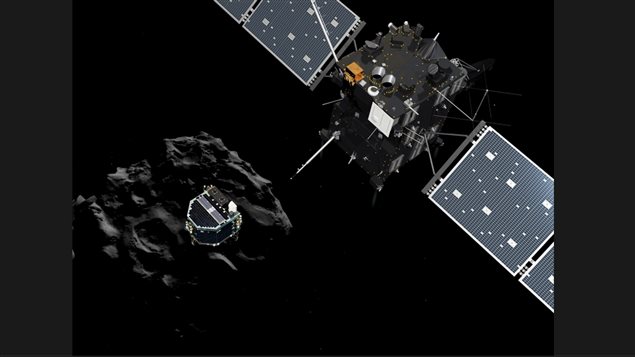It is an unbelievable technological achievement.
The “Rosetta” spacecraft with the “Philae” lander were sent into space on a 500 million kilometer journey to land on a comet. It is so far away in fact that even at light-speed of communication, it takes a signal about 30 minutes to travel from earth to the spacecraft. The journey itself took more than a decade.

Though it is now estimated at 500-million km from earth, the probe has actually travelled about 6-billion km to make the rendezvous with comet 67P/Churyumov-Gerasimenko
The 100kg lander however experienced some technical difficulties when the anchors didn’t deploy properly. The lander bounced to a far less desirable position where it’s solar panels are partially shaded and it’s survivability is in doubt as battery power fades.
Nevertheless, two Canadian companies are behind the amazing achievement of the spacecraft’s voyage to the 67P/Churyumov-Gerasimenko comet.
In spite of its small size, having a mere 250 employees, the firm SED Systems of the prairie city of Saskatoon, Saskatchewan played a critical role. It built the three ground stations used by the European Space Agency to communicate with the spacecraft and lander.
Those tracking stations are in Australia, Spain, and Argentina.
Another critical component of the operation was thanks to Ottawa, Ontario-based ADGA-RHEA Group. They provided software to handle complex operation procedures and commands.

That company has been working with the ESA since 2000 and the software called MOIS- for Manufacturing and Operating Information System and is being used on almost every mission according the managing director of the Ottawa-based company.
It was the Canadian technology that helped put Rosetta into hibernation in June 2011 to conserve power as it sped through space, and then to reawaken it and all the scientific instruments aboard both vehicles in January this year.
Over 1,000 procedures had to be reviewed, revisited, changed, adapted and realigned as the spacecraft and lander were readied to complete the mission.
The Canadian technology is now involved in communication with the lander in an effort to move it before battery power fades.
The aim of the Rosetta mission-the first to actually land on a comet- is to unlock their mysteries. Comets are believed to be made of ancient material that predates the birth of the solar system.
Researchers hope that through data that Rosetta and Philae collect, they can learn more of how the solar system formed and how comets carried water and complex organics to the planets, preparing the stage for life on Earth.
Understanding the composition and mass of comets may also help if one is discovered on a collision course with earth and has to be intercepted and diverted or destroyed.
Learning about water content and minerals which can be used to provide resources and fuel for future manned deep-space missions is also a goal.
At last report the lander had begun drilling into the comet, but it is unknown at this point if the materials can be analyzed before power runs out.







For reasons beyond our control, and for an undetermined period of time, our comment section is now closed. However, our social networks remain open to your contributions.